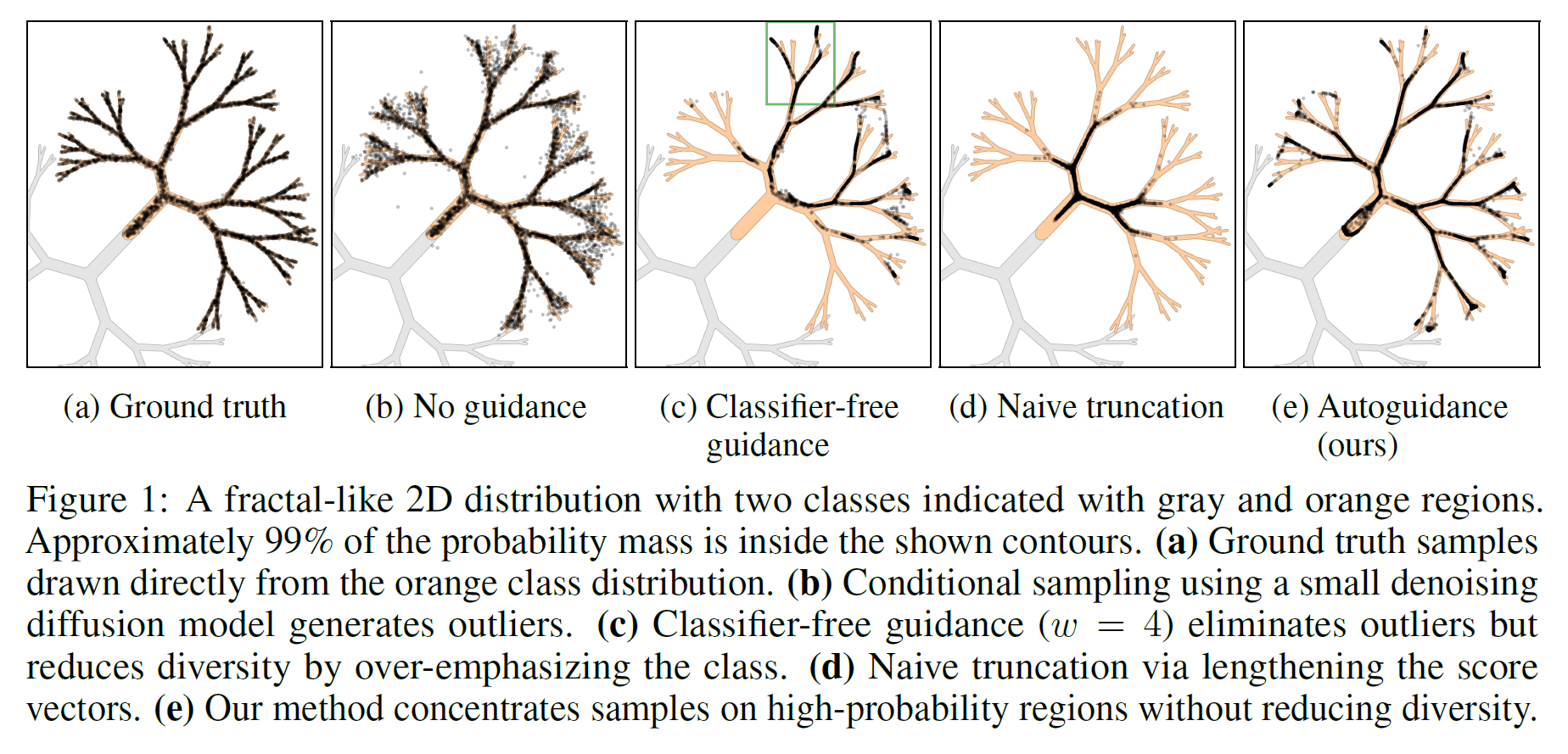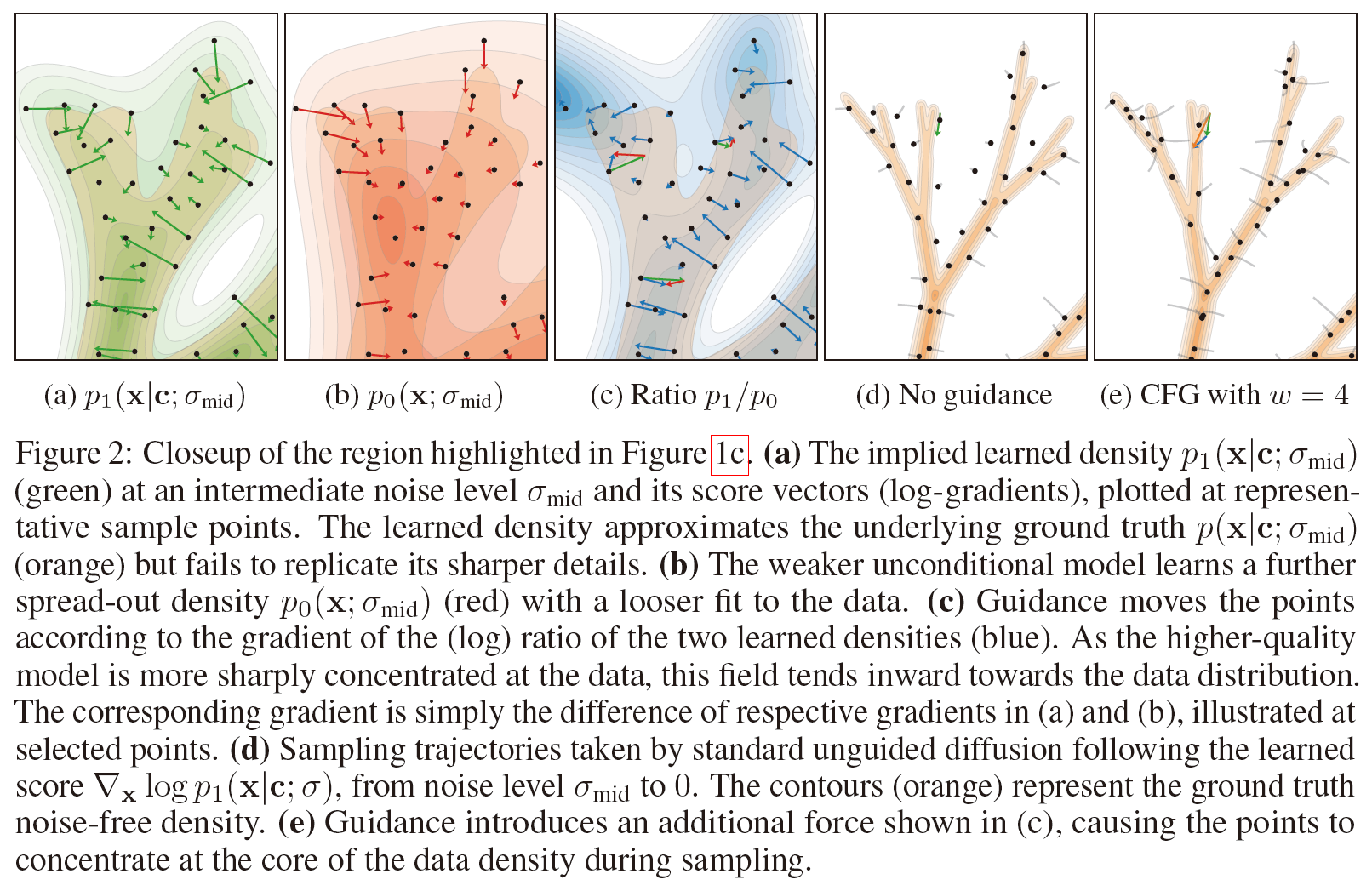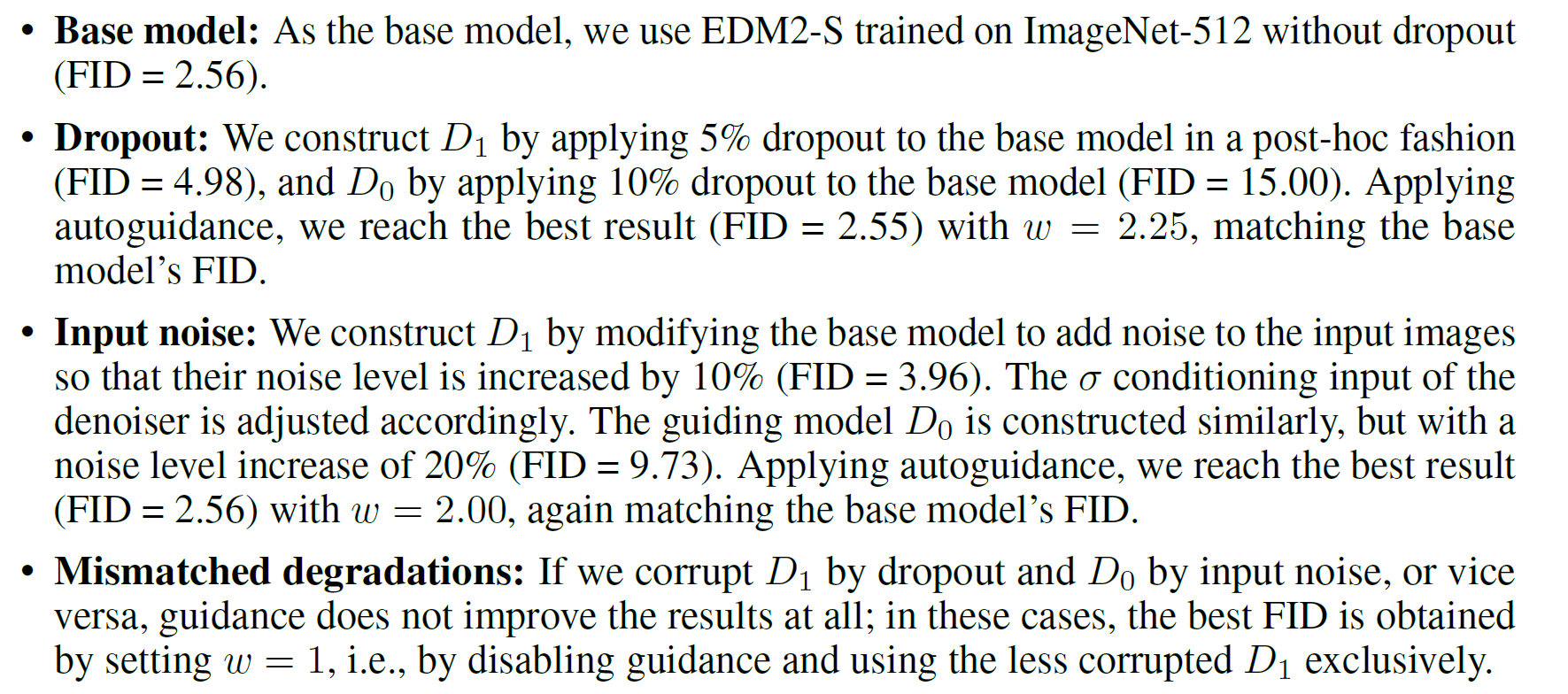SQA-031
[Paper] Guiding a Diffusion Model with a Bad Version of Itself
本文提出了 autoguidance, 又名 bad teacher, 说的是用一个更差的模型可以给好的模型做 guidance, 来起到比 cfg 更好的效果.
主要贡献是揭示了 class 并不是 guidance 的本质.
Problem
practical 的 CFG 会导致 mode collapse 等问题.
Diffusion Model 由于等价的 KL 散度 loss, 会过分关注于 low prob 的训练样本, 为了避免这些点的 extreme penalty. 换句话说, 由于能力限制, 它会更倾向于 cover the entire training data. 但是这样, 就会导致一些低概率的 sample, 也就是不好的图片


CFG 的作用是能一定程度上消除这些 outliers, 但是如上面的实例, 会忽略掉很多 branch.
Method
用两个模型, 都带 class label, $D_1$ 和一个更差的 $D_0$
我们期望/假设 $D_0, D_1$ 在 fitting 层面是在类似的地方 fit 的不好, 只不过是程度的区别 (similar error, only stronger)
这样的话, 让 $D_1$ 的 sample 远离 $D_0$ 就可以消除这样的误差 (low-prob regions)
Ablations on error type
一个重要的点在于, 两个模型必须有 same type of degradation

注意这个只是 ablation, 正常不会这么干
Auto-guidance choices
把 bad model 设置成 under-trained & reduced capacity 的模型
其中 less training 更能涨点. 默认采用 1/16 的 training
并且最优的地方, 两个模型使用的 ema 并不一样.
一般 reduce capacity 降一档就够了

对 ema 还挺敏感的 (m 代表 main model, g 代表 guiding model)
最后, 也探究了 guidance interval 的问题, 发现这个 guidance 对所有步骤都是有益的